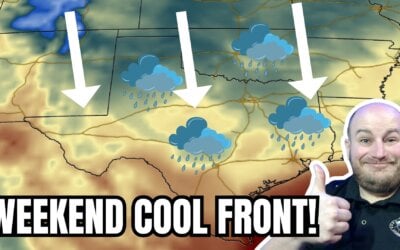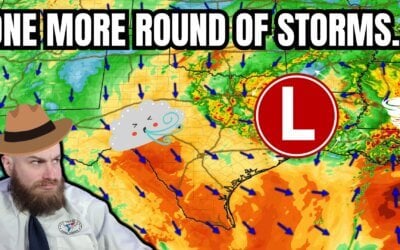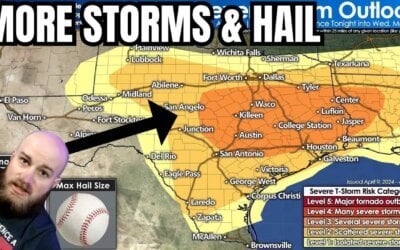The folks at the Weather Prediction Center have issued a focused and strongly worded warning for the D/FW Metroplex. The WPC handle precipitation related events (forecasting precipitation totals, issuing flood outlooks, etc). They indicate that a dangerous and life-threatening flash flood event is beginning to unfold in the immediate D/FW metro. They anticipate conditions to worsen with the potential of numerous road closures amidst dangerous night-time driving conditions. This is a dangerous situation with the potential of life-threatening flooding tonight. We’re already aware of one missing individual due to flooding tonight and the event has just begun. Please be careful if you must be out and understand that flood waters are difficult to identify at night.
Here is the full discussion from the Weather Prediction Center... Mesoscale Precipitation Discussion 0877 NWS Weather Prediction Center College Park MD 1005 PM EDT Fri Sep 21 2018 Areas affected...Dallas-Fort Worth Metro Area Concerning...Heavy rainfall...Flash flooding likely Valid 220204Z - 220630Z Summary...Dangerous and life-threatening flash flooding is developing in the immediate Dallas-Ft. Worth Metro Area this evening. Persistent thunderstorms and heavy rain are likely to lead to significant rainfall totals. Rain rates should reach (or locally exceed) 3 in/hr in the strongest rain bands and thunderstorms. Discussion...Significant flash flooding is just beginning to develop in North Texas, and specifically the immediate Dallas-Ft. Worth metro area. An increasing concentration of thunderstorms and heavy convective rain bands are expected during the evening very near a developing surface low. Hi-res models had originally projected this to be a little further west, but 01Z surface observations showed the lowest pressures over Tarrant County, as well as a coherent circulation to the surface winds. The hi-res models were insistent that the heaviest rain would be concentrated in the immediate vicinity of the surface low, and perhaps just to the north-northeast, where low-level confluence will be maximized (low -topped convection could thus be increasingly channeled into this area). This would also be an area on the northern cusp of broad southerly inflow and situated right in the middle of a bubble of deep moisture. Therefore, the expectation is that the hi-res models generally assessed the heavy rainfall potential with this feature correctly, it will just end up being shifted further east, and into the DFW metro area. GPS-PW observations in the region were around 2.4 inches, significant values and above the 99th percentile in the regional climatology. The expectation of an increasing concentration of convection in the immediate vicinity of DFW metro is also implied by remote sensing data, with KFWS radar and GOES-16 satellite showing these trends well. Accounting for the low ZDR bias at KFWS still implies numerous small droplets in the convective rain bands when examining the dual pol datasets. The overall environment (very high PW and MLCAPE over 500 j/kg) will support highly efficient rain production, and this is confirmed by the dual pol data. This sort of environment would make 3+ in/hr rain rates achievable in large, relatively steady-state, and slow-moving convective bands. Several mesonet sites in the vicinity of Plano have already reported rain rates around 2 in/hr and some water rescues were reported in Denton County. The expectation of significant rain rates persisting for (at least) several hours over a large urban area suggests that dangerous, life-threatening flash flooding will continue to develop this evening. Radar trends also suggest this flooding could affect a large portion of the DFW metro area and surrounding counties, and thus travel could become increasingly difficult with numerous flooded and impassible roads, particularly dangerous at nighttime. Therefore, this focused mesoscale precipitation discussion has been issued to highlight this enhanced threat for dangerous flash flooding.




0 Comments